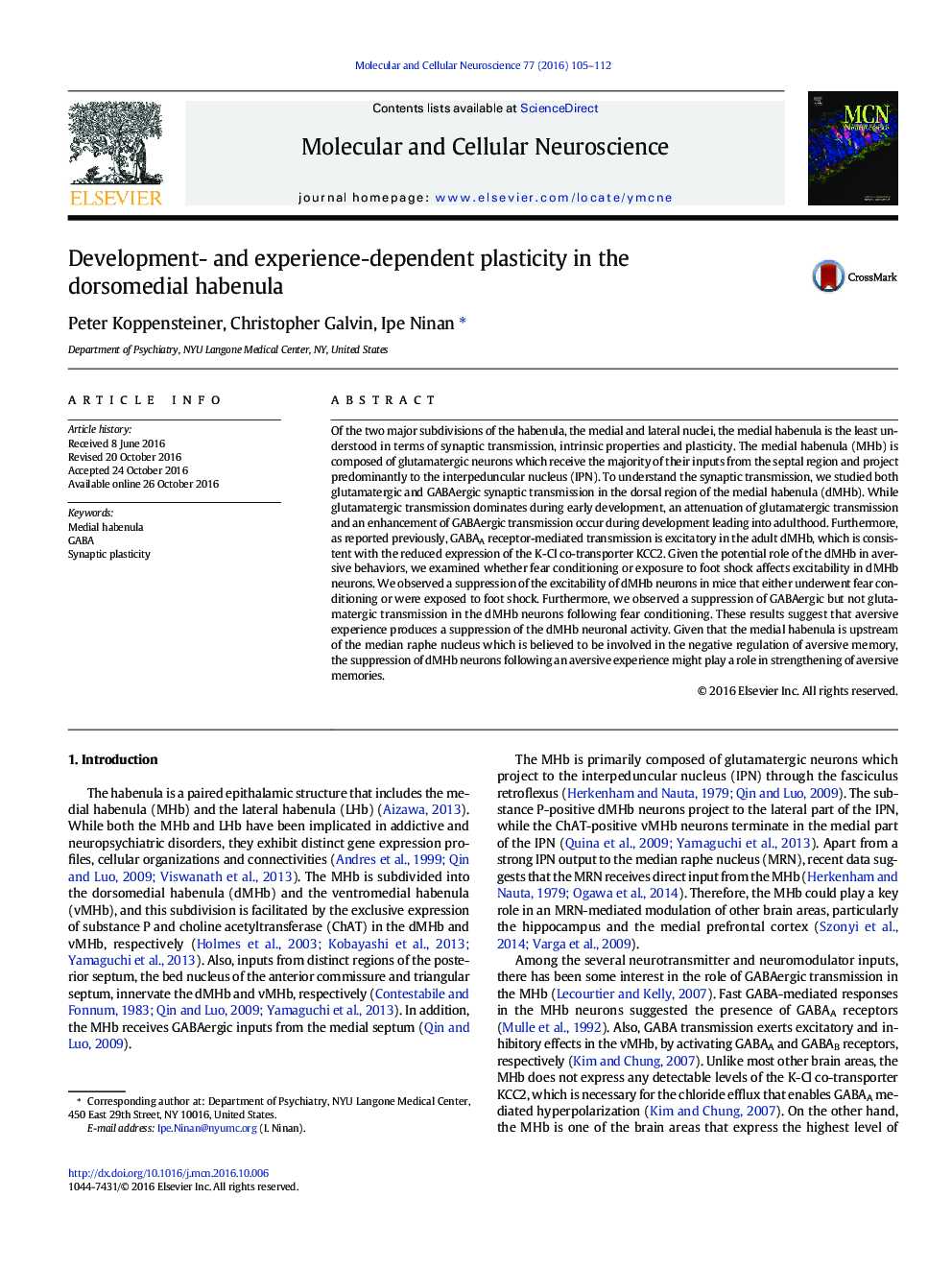| کد مقاله | کد نشریه | سال انتشار | مقاله انگلیسی | نسخه تمام متن |
|---|---|---|---|---|
| 5534461 | 1551129 | 2016 | 8 صفحه PDF | دانلود رایگان |
- dMHb neurons show stable membrane properties throughout development.
- dMHb neurons exhibit a developmental switch in synaptic transmission
- Excitatory GABAergic transmission is more pronounced in adult dMHb neurons.
- Aversive experience suppresses dMHb neuronal activity.
Of the two major subdivisions of the habenula, the medial and lateral nuclei, the medial habenula is the least understood in terms of synaptic transmission, intrinsic properties and plasticity. The medial habenula (MHb) is composed of glutamatergic neurons which receive the majority of their inputs from the septal region and project predominantly to the interpeduncular nucleus (IPN). To understand the synaptic transmission, we studied both glutamatergic and GABAergic synaptic transmission in the dorsal region of the medial habenula (dMHb). While glutamatergic transmission dominates during early development, an attenuation of glutamatergic transmission and an enhancement of GABAergic transmission occur during development leading into adulthood. Furthermore, as reported previously, GABAA receptor-mediated transmission is excitatory in the adult dMHb, which is consistent with the reduced expression of the K-Cl co-transporter KCC2. Given the potential role of the dMHb in aversive behaviors, we examined whether fear conditioning or exposure to foot shock affects excitability in dMHb neurons. We observed a suppression of the excitability of dMHb neurons in mice that either underwent fear conditioning or were exposed to foot shock. Furthermore, we observed a suppression of GABAergic but not glutamatergic transmission in the dMHb neurons following fear conditioning. These results suggest that aversive experience produces a suppression of the dMHb neuronal activity. Given that the medial habenula is upstream of the median raphe nucleus which is believed to be involved in the negative regulation of aversive memory, the suppression of dMHb neurons following an aversive experience might play a role in strengthening of aversive memories.
Journal: Molecular and Cellular Neuroscience - Volume 77, December 2016, Pages 105-112
